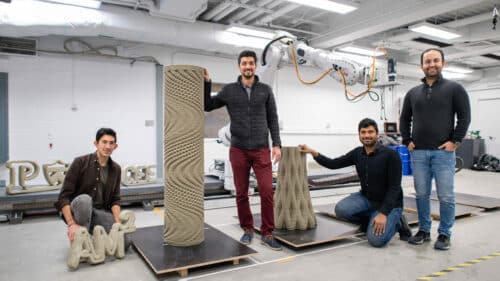Princeton engineers use lasers to assess 3D-printed cement’s fracture resistance, aiming for broader additive manufacturing applications and improved materials with innovative designs.

Cement is a key component of concrete used in construction, and 3D printing has gained interest for its efficiency. However, 3D-printed concrete may crack due to non-uniform microstructures caused by layering.
Engineers at Princeton University are deploying lasers to assess the fracture resistance of 3D-printed cement. Progress in this field aims to expand additive manufacturing in cement-based structures, enabling improved materials and innovative designs. Non-uniform microstructures introduced during 3D printing contribute to cracking, but the researchers’ new test provides microscopic insights. The findings indicate that by understanding fracturing properties, 3D-printed concrete could match or exceed the strength of cast concrete.
Controlling laser power and speed enables precise control of groove depth and shape, facilitating more accurate testing than traditional methods. The researchers gain insights into the fracture properties of 3D-printed cement materials, which is vital for scaling up this technology. Additive technologies offer opportunities to create more robust and tougher materials through innovative design and fabrication freedom. Unlike poured cast concrete, 3D-printed concrete uses a nozzle to extrude cement paste one strand at a time, gradually building up layers. An obstacle arises during the extrusion process due to a thin film of water that forms around each printed strand to aid in its flow. These moisture-laden films can cause notable internal defects and inconsistencies between the strands of the 3D-printed material, ultimately weakening its structural integrity.
The researchers analyzed interfaces to study their impact on fracture properties. They used a customized 3D printer to fabricate and cure samples, avoiding the imprecise notching caused by traditional methods with circular saws. The team highlighted that this approach aids in determining material properties for scaling up concrete additive manufacturing in structural and nonstructural applications.
The researchers explored architected materials and fracture characteristics, advancing our understanding of fracture mechanics in the context of 3D-printed concrete. They also developed new fracture test methods specifically designed for assessing the fracture behavior of 3D-printed concrete.
Reference: Shashank Gupta et al, Fracture and transport analysis of heterogeneous 3D-Printed lamellar cementitious materials, Cement and Concrete Composites (2023). DOI: 10.1016/j.cemconcomp.2023.105034








